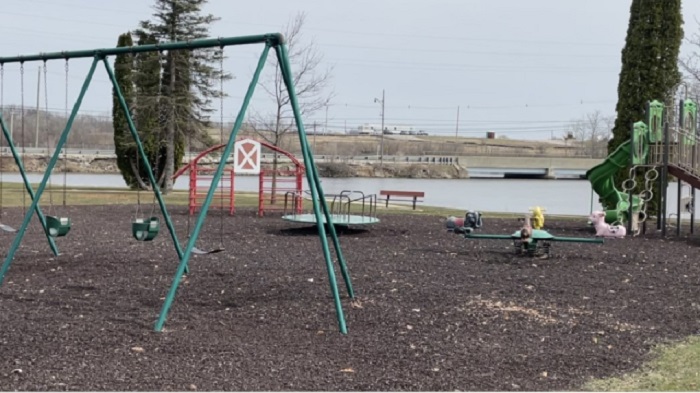Grand Rapids, Mich. — Over 50 years have passed since the catastrophic PBB (polybrominated biphenyl) contamination in Michigan, yet the U.S. Environmental Protection Agency (EPA) remains actively involved in mitigating the disaster’s aftermath. Currently, crews are working to install a barrier wall at the former Velsicol Chemical Plant site in St. Louis, aiming to prevent the spread of contaminated soil and groundwater into the nearby Pine River. The project, set to be completed by fall 2025, is one of the final steps in the long-term cleanup of a site linked to a tragedy that devastated Michigan’s agricultural industry and affected the health of its residents.
The roots of the PBB disaster trace back to the spring of 1973, when a shipping error by the Velsicol Chemical Company led to a deadly mix-up. The Michigan Farm Bureau had ordered Nutrimaster, a magnesium oxide product used in dairy feed to boost milk production. Instead, they received Firemaster, a fire retardant containing PBB, a toxic substance that closely resembled Nutrimaster in both color and texture. The chemical, unbeknownst to the recipients, was highly toxic.
The contamination didn’t end with the initial shipment. The machinery used to mix the feed at over 500 farms across Michigan became contaminated with PBB, spreading the chemical into animal feed for months. As a result, thousands of farm animals were exposed to the toxic substance. The repercussions were swift and devastating: 30,000 cattle, 4,500 swine, 1,500 sheep, and approximately 1.5 million chickens either died or had to be slaughtered. The full scale of the damage remains difficult to quantify, especially considering the animals that were exposed but still passed health protocols and entered the food supply.
In addition to the immediate agricultural devastation, Michigan residents also faced severe health consequences. Roy and Marilyn Tacoma, key plaintiffs in the lawsuit against Velsicol and the Michigan Farm Bureau, shared their personal health struggles in court. Marilyn Tacoma recounted episodes of fainting, uncontrollable diarrhea, and temporary blindness. Her children experienced joint pain and extreme fatigue, symptoms that many others in the region also reported. As the contamination spread through the food chain, studies revealed that nearly everyone in Michigan during that time had measurable levels of PBB in their systems. The chemical, which accumulates in body fat, was even passed to future generations through breast milk, ensuring the lasting impact of the disaster.
The Velsicol Chemical Plant, located in Gratiot County, was shut down in 1978, but the environmental contamination remained. The site became a Superfund location, designated for federal cleanup efforts due to the severity of the contamination. In 1982, the EPA and the state of Michigan entered an agreement to address the environmental damage. Since then, the EPA has been steadily working on a remediation plan that includes soil and groundwater containment and treatment.
The barrier wall now being installed is a key component of the EPA’s ongoing efforts at the Superfund site. This barrier will help contain the spread of contamination, preventing further contamination of the Pine River, which is a crucial local waterway. While the barrier wall is expected to be completed by the fall of 2025, the work at the site will continue for years. Tom Alcamo, a former EPA remedial project manager, stated in 2023 that the containment portion of the project is expected to be completed by 2026, assuming no major changes to funding. However, additional work remains, including addressing the capping of the property and the extraction and treatment of contaminated groundwater.
Despite the progress, the full scope of the damage caused by the PBB contamination is still felt across Michigan. For the thousands of farmers whose livelihoods were destroyed and the families who suffered from health problems, the road to recovery has been long. The EPA’s continued efforts are critical in mitigating the lasting effects of the disaster, but for many, the impact of the PBB disaster will never be forgotten.
As Michigan marks the 50th anniversary of the PBB disaster, the work at the Velsicol Superfund site serves as a stark reminder of the environmental and human toll of industrial negligence. The disaster has shaped the state’s history and remains a poignant example of the far-reaching consequences of toxic contamination. The ongoing cleanup efforts, though vital, also highlight the importance of vigilance and accountability in preventing such disasters from happening again.







